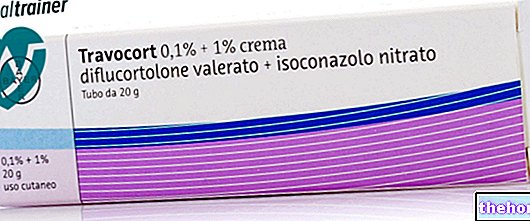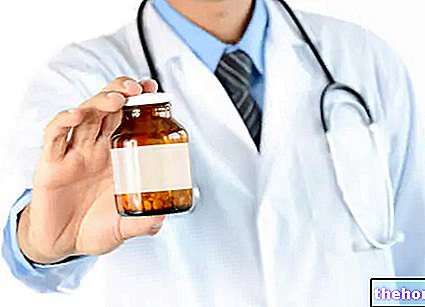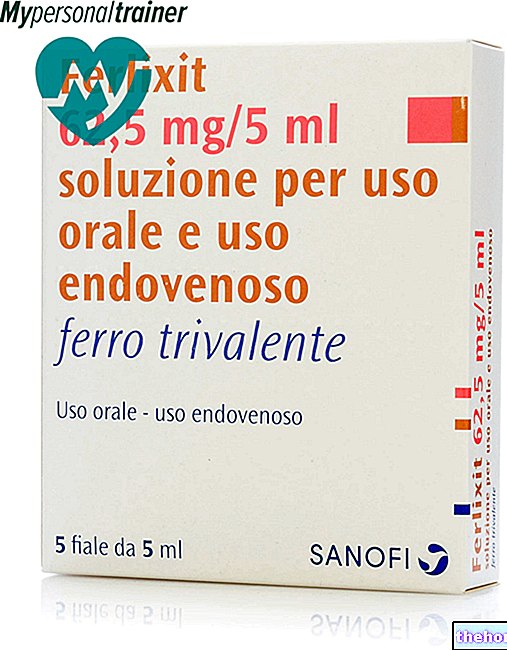Active ingredients: Choriogonadotropin alfa
Ovitrelle 250 micrograms / 0.5 mL solution for injection in a pre-filled syringe
Ovitrelle package inserts are available for pack sizes:- Ovitrelle 250 micrograms / 0.5 mL solution for injection in a pre-filled syringe
- Ovitrelle 250 micrograms solution for injection in pre-filled pen
Why is Ovitrelle used? What is it for?
What is Ovitrelle
Ovitrelle contains a medicine called 'choriogonadotropin alfa' which is made in a laboratory using special recombinant DNA techniques. Choriogonadotropin alfa is very similar to a hormone found naturally in the human body, chorionic gonadotropin, which is involved in reproduction and fertility.
What is Ovitrelle for
Ovitrelle is used together with other medicines:
- to induce the growth and development of numerous follicles (each containing an oocyte) in women undergoing assisted reproductive techniques (a procedure that can help them get pregnant), such as "in vitro fertilization". Other medicines are given first to induce the growth of several follicles.
- to induce the release of an egg from the ovaries (induction of ovulation) in women who do not produce eggs (a condition called anovulation) or who produce too few eggs (oligo-ovulation). Other medicines for growth and development are given first of the follicles.
Contraindications When Ovitrelle should not be used
Do not use Ovitrelle
- if you are allergic to choriogonadotropin alfa or any of the other ingredients of this medicine (listed in section 6)
- if you have a tumor in a part of the brain called the "hypothalamus" or "pituitary"
- if you have enlarged ovaries or pockets of fluid in the ovaries (ovarian cysts) of unknown origin
- if you suffer from unexplained vaginal bleeding
- if you have cancer of the ovaries, uterus or breast
- if you have had a pregnancy outside the womb (ectopic pregnancy) within the past 3 months
- if you have severe inflammation of the veins or blood clots in the veins (active thromboembolic disorder)
- if you are subject to conditions that usually make normal pregnancy impossible, for example menopause or premature menopause (ovarian failure) or malformations of the sexual organs
Do not use Ovitrelle if any of these conditions apply to you. If you are unsure consult your doctor before using this medicine.
Precautions for use What you need to know before taking Ovitrelle
Before starting treatment, your fertility and that of your partner should be evaluated by a doctor experienced in the treatment of fertility problems.
Ovarian Hyper-Stimulation Syndrome (OHSS)
This medicine may increase the risk of developing OHSS. This occurs when follicles overgrowth and become large cysts.
If you have lower abdominal pain, gain weight rapidly, feel sick or vomit or have difficulty breathing, do not inject Ovitrelle and talk to your doctor straight away (see section 4). If you are developing OHSS , you may be told not to have sex or to use a barrier method of contraception for at least four days.
The risk of OHSS is reduced when the usual dose of Ovitrelle is used and the course of treatment is closely monitored (for example: blood measurements of estradiol levels and ultrasound).
Multiple pregnancies and / or birth defects
While using Ovitrelle, you are at a greater risk of having a multiple pregnancy, in most cases twins, than you would having natural conception. Multiple pregnancy can lead to medical complications for you and your babies. When you have it. to assisted reproductive techniques, the risk of having a multiple pregnancy is related to the number of fertilized embryos or oocytes that are transferred to it. Multiple pregnancies and certain characteristics of the couple with fertility problems (eg age) can also be associated with an increased risk of birth defects.
The risk of multiple pregnancies is reduced when the usual dose of Ovitrelle is used and the course of treatment is closely monitored (for example: blood measurements of estradiol levels and ultrasound).
Ectopic pregnancies
In women with damaged fallopian tubes (the tubes that carry the egg from the ovary to the uterus), pregnancy outside the uterus (ectopic pregnancy) can occur. The doctor must therefore perform an ultrasound scan early to rule out this possibility.
Abortion
When undergoing assisted reproductive techniques or ovarian stimulation to produce eggs, the risk of miscarriage is greater than in other women.
Blood clotting problems (thromboembolic events)
If you have had, in the past or recently, blood clots in the legs or lung or a heart attack or stroke, or if this has happened in your family, there may be an increased risk of these problems occurring or worsening with treatment. with Ovitrelle.
Pregnancy test
If you take a serum or urine pregnancy test after using Ovitrelle and for up to ten days after that, you may get a false positive test result. If in doubt, ask your doctor.
Children and adolescents
Ovitrelle should not be used in children and adolescents
Interactions Which drugs or foods may change the effect of Ovitrelle
Tell your doctor if you are taking, have recently taken or might take any other medicines.
Warnings It is important to know that:
Pregnancy and breastfeeding
Do not use Ovitrelle if you are pregnant or breastfeeding.
Ask your doctor or pharmacist for advice before taking any medicine.
Driving and using machines
Ovitrelle is not believed to affect the ability to drive or use machines.
Important information about some of the ingredients of Ovitrelle
This medicinal product contains less than 1 mmol (23 mg) sodium, ie it is essentially "sodium-free"
Dose, Method and Time of Administration How to use Ovitrelle: Posology
Always use this medicine exactly as your doctor has told you. If in doubt, consult your doctor or pharmacist.
Quantity to use
- The recommended dose is 1 pre-filled syringe (250 micrograms / 0.5 mL) given as a single injection.
- Your doctor will have told you exactly when to inject.
Use of this medicine
- Ovitrelle must be administered subcutaneously, which means by an injection under the skin.
- Each pre-filled syringe is for single use only. To be used only if the solution is clear and free of particles.
- Your doctor or nurse will show you how to use the Ovitrelle pre-filled syringe to inject the medicine.
- Inject Ovitrelle as instructed by your doctor or nurse.
- After the injection, dispose of the used needle safely.
If you administer Ovitrelle alone, please read the following instructions carefully:
- Wash your hands. It is important that your hands and the accessories you use are as clean as possible.
- Gather everything you need. Please note that alcohol-soaked cotton balls are not included in the package. Find a clean area and place everything you need on it: - two alcohol-soaked cotton swabs, - a pre-filled syringe containing the medicine.
- Injection: Immediately inject the solution: your doctor or nurse should have already advised you where to inject (for example: abdomen, front of thigh). Clean the chosen area with an alcohol-soaked cotton swab. Hold firmly between fingers the skin and insert the injection needle at an angle between 45 ° and 90 ° with an arrow-like motion. Inject under the skin, as taught. Do not inject directly into a vein. Inject the solution by pressing Slowly the plunger of the syringe. Take all the time necessary to inject all the solution. Immediately remove the needle and clean with an alcohol swab in a circular motion.
- Disposal of used items: Once you have finished your injection, immediately discard the empty syringe in an appropriate container. Discard any unused solution.
Overdose What to do if you have taken too much Ovitrelle
If you use more Ovitrelle than you should
If too much Ovitrelle has been used, you may be experiencing ovarian hyperstimulation syndrome. Contact your doctor immediately if you experience lower abdominal pain, rapid weight gain, nausea or vomiting, or if you have difficulty breathing.
If you forget to use Ovitrelle
If you forget to use Ovitrelle, contact your doctor as soon as you realize it.
If you have any further questions on the use of this medicine, ask your doctor or pharmacist.
Side Effects What are the side effects of Ovitrelle
Like all medicines, this medicine can cause side effects, although not everybody gets them.
Stop using Ovitrelle and see a doctor immediately if you notice any of the following serious side effects, as you may need urgent medical treatment:
- allergic reactions such as rapid or irregular pulse, swelling of the tongue and throat, sneezing, wheezing or severe breathing difficulties are very rare (may affect up to 1 in 10,000 people);
- pain in the lower abdomen with nausea or vomiting may be symptoms of ovarian hyperstimulation syndrome (OHSS). This may indicate that the ovaries overreact to treatment and large ovarian cysts have developed (see also section 2, under "Ovarian hyperstimulation syndrome"). This is a common occurrence (may affect up to 1 in 10 people);
- OHSS can become severe with noticeable enlargement of the ovaries, decreased urine production, weight gain, difficulty in breathing and possible accumulation of fluid in the belly or chest. This is uncommon (may affect up to 1 in 100 people );
- Serious clotting complications (thromboembolic events) independent of OHSS can be found very rarely. This can cause chest pain, breathlessness, stroke or heart attack (see also section 2, under "Blood clotting problems").
Other side effects
Common (may affect up to 1 in 10 people)
- Headache, feeling tired.
- Local reactions at the injection site, such as pain, redness or swelling.
Uncommon (may affect up to 1 in 100 people)
- Diarrhea.
- Feeling depressed, irritable or restless.
- Breast pain.
Very rare (may affect up to 1 in 10,000 people)
- Mild allergic skin reactions such as rash.
Pregnancy outside the uterus, ovarian torsion (a disease affecting the ovaries) and other complications can result from the assisted reproductive techniques used by the doctor.
Reporting of side effects
If you get any side effects, talk to your doctor or pharmacist. This includes any possible side effects not listed in this leaflet. You can also report side effects directly via the national reporting system listed in Appendix V. By reporting side effects you can help provide more information on the safety of this medicine.
Expiry and Retention
Keep this medicine out of the sight and reach of children
Do not use this medicine after the expiry date which is stated on the label and carton after EXP. The expiry date refers to the last day of that month.
Store in a refrigerator (2 ° C - 8 ° C). Store in the original packaging. Ovitrelle 250 micrograms solution for injection can be stored for up to 30 days at room temperature (not above 25 ° C) without being placed back in the refrigerator and, after this 30 day period, if not used, it should be discarded.
Do not throw any medicines via wastewater or household waste. Ask your pharmacist how to throw away medicines you no longer use. This will help protect the environment.
Composition and pharmaceutical form
What Ovitrelle contains
- The active substance is choriogonadotropin alfa, produced by recombinant DNA technology.
- Each pre-filled syringe contains 250 micrograms / 0.5 mL (equivalent to 6,500 IU).
- The other ingredients are mannitol, methionine, poloxamer 188, phosphoric acid, sodium hydroxide, water for injections.
What Ovitrelle looks like and contents of the pack
Ovitrelle is supplied as a solution for injection. It is available in a single pre-filled syringe (pack of 1).
Source Package Leaflet: AIFA (Italian Medicines Agency). Content published in January 2016. The information present may not be up-to-date.
To have access to the most up-to-date version, it is advisable to access the AIFA (Italian Medicines Agency) website. Disclaimer and useful information.
01.0 NAME OF THE MEDICINAL PRODUCT
OVITRELLE 250 MCG / 0.5 ML, SOLUTION FOR INJECTION IN PRE-FILLED SYRINGE
02.0 QUALITATIVE AND QUANTITATIVE COMPOSITION
Each pre-filled syringe contains 250 micrograms of choriogonadotropin alfa * (equivalent to approximately 6,500 IU) in 0.5 mL solution.
* recombinant human choriogonadotropin, r-hCG, produced by recombinant DNA technology in Chinese Hamster Ovary (CHO) cells.
For the full list of excipients, see section 6.1.
03.0 PHARMACEUTICAL FORM
Solution for injection in pre-filled syringe.
Clear colorless or pale yellow solution.
The pH of the solution is 7.0 ± 0.3, the osmolality is 250-400 mOsm / kg.
04.0 CLINICAL INFORMATION
04.1 Therapeutic indications
Ovitrelle is indicated in the treatment of:
• Adult women who have undergone superovulation in preparation for assisted reproductive techniques such as in vitro fertilization (IVF): Ovitrelle is administered to induce final follicle maturation and luteinization after stimulation of follicular growth.
• Anovulatory or oligo-ovulatory adult women: Ovitrelle is administered to induce ovulation and luteinization in anovulatory or oligo-ovulatory women after stimulation of follicular growth.
04.2 Posology and method of administration
Ovitrelle treatment should be supervised by a doctor experienced in the treatment of fertility problems.
Dosage
The maximum dose is 250 mcg. The following therapeutic scheme should be used:
• Women who have undergone superovulation in preparation for assisted reproductive techniques such as in vitro fertilization (IVF):
Administer the contents of one Ovitrelle pre-filled syringe (250 micrograms) 24 to 48 hours after the last administration of follicle stimulating hormone (FSH) or human menopausal gonadotropin (HMG), upon achieving optimal stimulation of follicular growth.
• Anovulatory or oligo-ovulatory women:
Administer the contents of one Ovitrelle pre-filled syringe (250 mcg) 24 to 48 hours after optimal stimulation of follicular growth has been achieved. It is recommended after optimal follicular growth stimulation has been achieved. The patient is recommended to have sexual intercourse for procreative purposes both on the day of the Ovitrelle injection and the day after.
Special populations
Renal or hepatic insufficiency
The safety, efficacy and pharmacokinetics of Ovitrelle in patients with renal or hepatic impairment have not been established.
Pediatric population
There is no indication for a specific use of Ovitrelle in the pediatric population.
Method of administration
For subcutaneous use. Ovitrelle self-administration should only be performed by patients who are adequately educated and who can avail themselves of expert advice.
Ovitrelle is for single use only.
04.3 Contraindications
• Hypersensitivity to the active substance or to any of the excipients listed in section 6.1.
• Tumors of the hypothalamus or pituitary gland
• Ovarian enlargement or cyst not due to polycystic ovary syndrome
• Gynecological haemorrhages of unknown etiology
• Carcinoma of the ovary, uterus or breast
• Extrauterine pregnancy that occurred within the previous three months
• Thromboembolic disorders in progress
• Primary ovarian failure
• Malformations of the sexual organs incompatible with pregnancy
• Uterine fibroids incompatible with pregnancy
• Postmenopause.
04.4 Special warnings and appropriate precautions for use
Before starting treatment, the couple's infertility should be studied and any contraindications to pregnancy should be evaluated.In particular, patients should be examined for hypothyroidism, adrenocortical insufficiency, hyperprolactinaemia, and tumors of the pituitary or hypothalamus, and should undergo specific therapy.
There is no clinical experience with Ovitrelle in the treatment of other diseases (such as corpus luteum insufficiency or male diseases); therefore, Ovitrelle is not indicated for the treatment of these diseases.
Ovarian hyperstimulation syndrome (Ovarian Hyperstimulation Syndrome, OHSS)
Patients undergoing ovarian stimulation are at an increased risk of developing OHSS due to multiple follicular development.
Ovarian hyperstimulation syndrome can become a serious adverse event, characterized by large ovarian cysts that can easily rupture, weight gain, dyspnoea, oliguria or the presence of ascites within a clinical picture of circulatory dysfunction. In rare cases, Severe OHSS can be complicated by haemoperitoneum, acute respiratory distress, ovarian torsion, and thromboembolism.
To minimize the risk of OHSS, ultrasound monitoring of follicular development and / or determination of serum estradiol levels is recommended before and at regular intervals during treatment. In anovulation, the risk of OHSS is increased in the presence of serum estradiol levels> 1,500 pg / mL (5,400 pmol / L) and more than 3 follicles with a diameter equal to or greater than 14 mm. In assisted reproductive techniques, the risk of OHSS increases with serum estradiol levels> 3,000 pg / mL (11,000 pmol / L) and 18 or more follicles with a diameter greater than or equal to 11 mm.
OHSS due to excessive ovarian response can be avoided by discontinuing hCG administration. Therefore, in the presence of signs of ovarian hyperstimulation, such as serum estradiol levels> 5,500 pg / mL (20,000 pmol / L) and / or in the presence of 30 or more follicles in total, it is recommended that hCG administration be suspended and the patient advised to refrain from sexual intercourse or to use barrier methods of contraception for at least 4 days.
Multiple pregnancies
In patients undergoing ovulation induction, the incidence of multiple pregnancies and births (mainly twins) is higher than in natural conception. The risk of multiple pregnancies following assisted reproductive techniques is related to the number of embryos transferred.
Compliance with the recommended Ovitrelle dose, administration regimen and careful monitoring of therapy will minimize the risk of OHSS and multiple pregnancies.
Abortion
The abortion rate, both in anovulatory patients and in women undergoing assisted reproductive techniques, is higher than that found in the normal population but comparable to the rates observed in women with other infertility problems.
Ectopic pregnancies
Since infertile women who undergo assisted reproductive techniques (Assisted Reproductive Technologies, ART) and, in particular, at IVF, often have tubal anomalies, the incidence of ectopic pregnancies may be higher. It is important to confirm early by ultrasound that the pregnancy is intrauterine and to rule out that it is extrauterine.
Congenital malformations
The incidence of congenital malformations following ART may be slightly higher than with natural conception. This is believed to be due to parental characteristics (eg age of the mother, sperm characteristics) and the higher incidence of multiple pregnancies.
Thromboembolic events
In women with recent or ongoing thromboembolic disease or in women with generally recognized risk factors for thromboembolic events, such as personal or family history, treatment with gonadotropins may further increase the risk of worsening or occurrence of these events. women, the benefits of gonadotropin administration must be weighed against the risks. It should be noted, however, that pregnancy itself, as well as OHSS, carry an increased risk of thromboembolic events, such as pulmonary embolism, ischemic stroke or myocardial infarction.
Interference with serological or urine tests
After administration, Ovitrelle may interfere with the immunoassay for the determination of serum or urinary hCG for up to 10 days after administration, which may result in a false positive pregnancy test.
Patients should be made aware of this risk.
Other information
Mild stimulation of the thyroid gland of unknown clinical relevance is possible during Ovitrelle therapy.
This medicinal product contains less than 1 mmol (23 mg) sodium per dose, ie it is essentially "sodium-free".
04.5 Interactions with other medicinal products and other forms of interaction
No specific interaction studies have been performed between Ovitrelle and other medicinal products, however no significant interactions with other medicinal products have been reported during hCG therapy.
04.6 Pregnancy and lactation
Pregnancy
There are no indications for the use of Ovitrelle during pregnancy. No clinical data on exposed pregnancies are available. Animal reproduction studies have not been performed with choriogonadotropin alfa (see section 5.3). The potential risk for humans is not known.
Feeding time
Ovitrelle is not indicated during lactation. There are no data on the excretion of choriogonadotropin alfa in milk.
Fertility
The use of Ovitrelle is indicated for the treatment of infertility (see section 4.1).
04.7 Effects on ability to drive and use machines
Ovitrelle is not thought to affect or negligibly affect the ability to drive or use machines.
04.8 Undesirable effects
Summary of the safety profile
In comparative clinical studies with different strengths of Ovitrelle, the following adverse reactions associated with Ovitrelle were detected in a dose-dependent manner: OHSS, vomiting and nausea. OHSS was observed in approximately 4% of patients treated with Ovitrelle. Severe OHSS was reported in less than 0.5% of patients (see section 4.4).
List of adverse reactions
The following definitions apply to the frequency terminology used below: very common (≥1 / 10), common (≥1 / 100,
Disorders of the immune system
Very rare: mild or severe hypersensitivity reactions including anaphylactic reactions and anaphylactic shock
Psychiatric disorders
Uncommon: depression, irritability, restlessness
Nervous system disorders
Common: headache
Vascular pathologies
Very rare: thromboembolism, usually associated with severe OHSS
Gastrointestinal disorders
Common: vomiting, nausea, abdominal pain
Uncommon: diarrhea
Skin and subcutaneous tissue disorders
Very rare: Mild reversible skin reactions, manifesting as a rash
Diseases of the reproductive system and breast
Common: Mild or moderate OHSS
Uncommon: severe OHSS, breast pain
General disorders and administration site conditions
Common: tiredness, injection site reaction.
Ectopic pregnancy, ovarian torsion and other complications have been reported in patients following hCG administration. These are believed to be concomitant effects related to assisted reproductive techniques.
Reporting of suspected adverse reactions
Reporting of suspected adverse reactions occurring after authorization of the medicinal product is important as it allows continuous monitoring of the benefit / risk balance of the medicinal product. Healthcare professionals are asked to report any suspected adverse reactions via the national reporting system. in "Annex V.
04.9 Overdose
The effects of an Ovitrelle overdose are not known. However, it is possible that an overdose of Ovitrelle induces OHSS (see section 4.4).
05.0 PHARMACOLOGICAL PROPERTIES
05.1 Pharmacodynamic properties
Pharmacotherapeutic group: sex hormones and modulators of the genital system, gonadotropins.
ATC code: G03GA08.
Mechanism of action
Ovitrelle is a choriogonadotropin alfa medicine produced by recombinant DNA techniques. It shares the same amino acid sequence as urinary hCG. Chorionic gonadotropin binds, on the ovarian cells of the theca (and granulosa) to a transmembrane receptor that it shares with the luteinizing hormone: the LH / CG receptor.
Pharmacodynamic effects
The main pharmacodynamic activity in women consists in the resumption of oocyte meiosis, in the rupture of the follicle (ovulation), in the formation of the corpus luteum and in the production of progesterone and estradiol by the corpus luteum.
In women, chorionic gonadotropin acts as a surrogate for the luteinizing hormone peak that induces ovulation.
Ovitrelle is used to induce final follicular maturation and early luteinization following the use of drugs that stimulate follicular growth.
Clinical efficacy and safety
In comparative clinical studies the administration of a dose of 250 mcg of Ovitrelle was equally effective at 5,000 IU and 10,000 IU of urinary hCG in inducing final follicular maturation and early luteinization during assisted reproductive techniques, and equally effective at 5,000. UI of urinary hCG in the induction of ovulation.
To date, there are no indications of the development of antibodies to Ovitrelle in humans. Repeated exposure to Ovitrelle has only been studied in male patients. In women, clinical investigation into the indications: assisted reproductive techniques (ART) and anovulation has been limited to one course of treatment.
05.2 "Pharmacokinetic properties
After intravenous administration, choriogonadotropin alfa distributes to the extracellular fluid compartment with a distribution half-life of approximately 4.5 hours. The steady-state volume of distribution and total clearance are 6 l and 0.2 l / h, respectively. There are no indications of a different metabolization and excretion of choriogonadotropin alfa compared to endogenous hCG.
After subcutaneous administration, choriogonadotropin alfa is eliminated from the body with a terminal half-life of approximately 30 hours, the absolute bioavailability is approximately 40%.
A comparative study demonstrated the bioequivalence between the lyophilisate formulation and the liquid formulation.
05.3 Preclinical safety data
Non-clinical data reveal no special hazard for humans based on conventional studies of safety pharmacology, repeated dose toxicity and genotoxicity. Studies on carcinogenic potential have not been performed. This is justified given the protein nature of the active substance and the negative results of the genotoxicity tests.
Animal reproduction studies have not been performed.
06.0 PHARMACEUTICAL INFORMATION
06.1 Excipients
Mannitol
Methionine
Poloxamer 188
Phosphoric acid (for pH adjustment)
Sodium hydroxide (for pH adjustment)
Water for injections
06.2 Incompatibility
In the absence of compatibility studies, this medicinal product must not be mixed with other medicinal products.
06.3 Period of validity
2 years.
The medicinal product should be used immediately after opening. However, stability has been demonstrated for 24 hours at temperatures between 2 ° C and 8 ° C.
06.4 Special precautions for storage
Store in a refrigerator (2 ° C - 8 ° C). Store in the original packaging. During the shelf life of the product, the solution can be stored for 30 days at a temperature not exceeding 25 ° C without being placed in the refrigerator again. In this case, after this period of 30 days, the solution, if not used, must be thrown away.
06.5 Nature of the immediate packaging and contents of the package
Pre-filled syringe (type I glass) containing 0.5 mL of solution, with plunger stopper (halobutyl rubber), plunger (plastic) and injection needle (stainless) - pack of 1.
06.6 Instructions for use and handling
The solution should not be administered if it contains particles or is not clear. For single use only.
Ovitrelle self-administration should only be performed by patients who are adequately educated and who can avail themselves of expert advice.
Unused medicine and wastes derived from this medicine must be disposed of in accordance with local regulations.
07.0 MARKETING AUTHORIZATION HOLDER
Merck Serono Europe Limited
56, Marsh Wall London E14 9TP United Kingdom
08.0 MARKETING AUTHORIZATION NUMBER
EU / 1/00/165/007
035188073
09.0 DATE OF FIRST AUTHORIZATION OR RENEWAL OF THE AUTHORIZATION
Date of first authorization: 02 February 2001
Date of most recent renewal: 02 February 2006
10.0 DATE OF REVISION OF THE TEXT
D.CCE May 2015




























